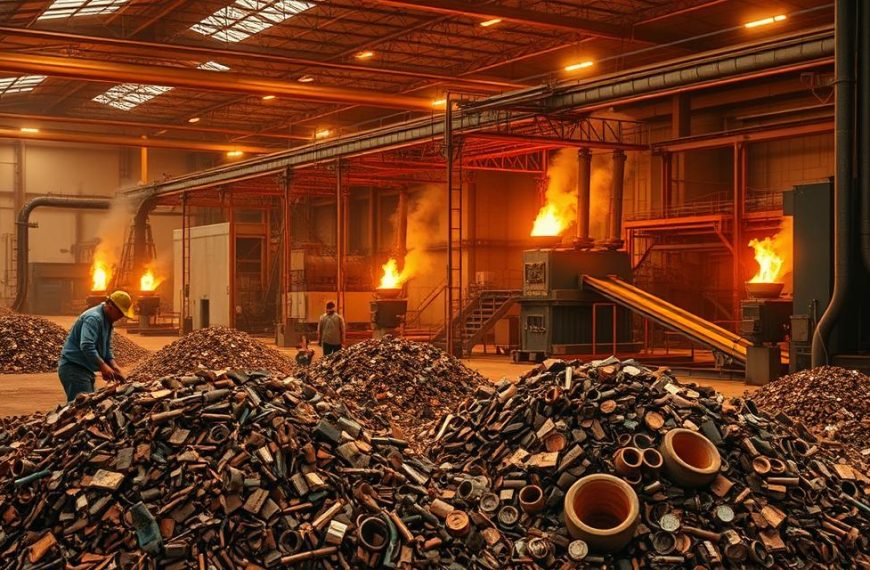The fashion industry produces billions of garments annually, and with them comes a hidden problem: hanger waste. In the U.S., 85% of textile waste, including these items, ends up in landfills. This creates a significant environmental burden that often goes unnoticed.
Many people overlook the disposal of these everyday objects, despite their daily use. The mixed-material composition of hangers makes them difficult to process in standard recycling systems. This complexity contributes to the growing issue of waste management.
Addressing this challenge requires innovative solutions, such as donation programs and partnerships with retailers. By taking small steps, we can reduce the millions of hangers discarded each year and make a positive impact on the environment.
Are Plastic Coat Hangers Recyclable?
The materials used in these products make them difficult to process in standard systems. Most are made from a mix of plastics and metal clips, which complicates separation during recycling. Understanding their composition is key to addressing the challenges they pose.
Understanding the Composition of Plastic Hangers
These items are often made from different types of plastics, such as PET or PVC. Some also include metal hooks or clips. This hybrid structure makes it hard to identify and sort the materials effectively. Without resin ID codes, they’re often rejected by curbside programs.
Why Most Plastic Hangers Can’t Be Recycled Curbside
Curbside recycling systems are designed for single-material items. Mixed materials can clog machinery or remain unprocessed due to unidentifiable resins. This leads to most of these items ending up in landfills, where they can leach harmful chemicals like BPA.
Exceptions to the Rule: When Recycling Is Possible
Some stores, such as Target and Kohl’s, offer take-back programs. These initiatives reuse items multiple times or grind them into new products. Target’s closed-loop system is a standout example, showing how retailers can lead in sustainability efforts.
| Retailer | Program | Outcome |
|---|---|---|
| Target | Closed-loop system | Reuses items 7+ times, grinds broken ones |
| Kohl’s | Take-back program | Accepts items for reuse or recycling |
| Walmart | Partnerships | Encourages sustainable disposal |
Challenges in Recycling Plastic Coat Hangers
Disposing of everyday items like hangers poses a significant environmental challenge. These items often end up in landfills, contributing to a growing problem of waste management. Their mixed composition makes them difficult to process, adding to the complexity.
Mixed Materials and Their Impact on Recycling
Most hangers are made from a combination of plastics and metal hooks. This hybrid structure disrupts recycling workflows, as facilities are designed for single-material items. Sorting these materials is time-consuming and often inefficient.
For example, 200 million pounds of steel from 3.5 billion wire hangers are landfilled yearly in the U.S. This highlights the scale of the issue and the need for better solutions.
Environmental Concerns: Landfills and Toxins
When hangers end up in landfills, they can leach harmful chemicals like BPA into the soil and groundwater. This contamination poses risks to ecosystems and human health. Globally, 79% of plastic waste accumulates in landfills or the environment.
By 2050, it’s estimated that 12 billion metric tons of plastic will be in landfills. This alarming statistic underscores the urgency of addressing hanger waste.
The Role of Retailers in Hanger Recycling
Retailers play a crucial role in reducing hanger waste. Some stores, like Target and Kohl’s, have take-back programs that reuse or recycle these items. However, consumer-facing programs remain limited.
Extended producer responsibility (EPR) policies could encourage brands to take more accountability. Tools like Recycle Coach also help individuals improve their disposal habits at home.
Alternatives to Recycling Plastic Coat Hangers
Exploring sustainable alternatives helps reduce waste effectively. Instead of discarding these items, consider donating, upcycling, or choosing eco-friendly options. These steps can make a significant impact on the environment.
Donating Hangers to Thrift Stores and Shelters
Many organizations accept donations of these items. Thrift stores, homeless shelters, and local theaters often welcome them. These stores reuse items, keeping them out of landfills.
Goodwill and Buy Nothing groups are great places to start. Donating is a simple way to give these items a second life. It’s also a chance to support your community.
Creative Upcycling Ideas for Plastic Hangers
Upcycling transforms old items into something new. Turn them into DIY wreaths, tool organizers, or plant holders. These projects are fun and practical for your home.
For example, use wire hangers to create a unique photo display. This creative approach extends their lifespan and reduces waste. It’s a great way to repurpose materials.
Sustainable Hanger Options: What to Look For
When buying new, choose eco-friendly products. Look for hangers made from bamboo, bioplastics, or recycled paper. Ditto hangers, for instance, are 100% compostable.
Scrap metal facilities accept metal hangers for recycling. Buying secondhand is another sustainable option. These choices help reduce demand for new materials.
| Option | Description | Benefit |
|---|---|---|
| Donation | Give to thrift stores or shelters | Supports reuse and community |
| Upcycling | Create DIY projects at home | Extends item lifespan |
| Sustainable Brands | Choose bamboo or recycled paper | Reduces environmental impact |
Conclusion
Every small action contributes to a larger environmental impact. Reusing items like hangers instead of replacing them is a simple yet effective way to reduce waste. Donating to thrift stores, upcycling at home, or participating in retailer programs are practical options to keep these items out of landfills.
Pressure brands to adopt transparent systems for handling these products. Collective efforts can significantly reduce the 20 billion hangers discarded yearly. Small changes, like choosing sustainable types of hangers, lead to long-term benefits for the planet.
Take action today. Together, we can make a difference one hanger at a time.
















